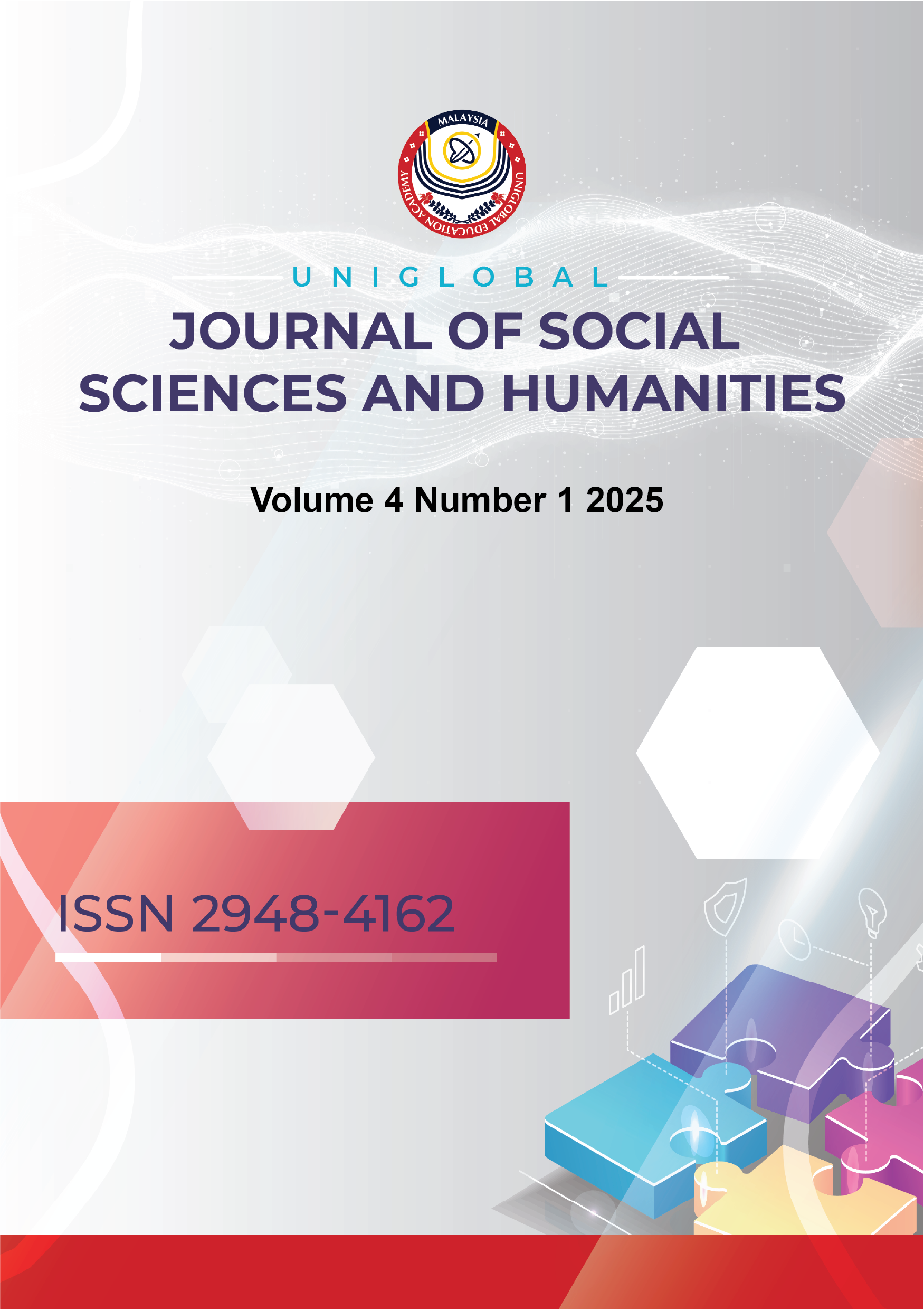Exploring the Impact of Virtual Learning Environments on Social Interaction and Academic Performance in China
DOI:
https://doi.org/10.53797/ujssh.v4i1.25.2025Keywords:
Virtual learning environments, social interaction, academic performance, self-regulation, technological literacyAbstract
This study investigates the impact of virtual learning environments (VLEs) on social interaction and academic performance among university students in China. As online education continues to grow in prominence, understanding the factors that influence student success in VLEs is crucial. The research explores the relationship between social interaction (including peer and instructor interactions), self-regulation, technological literacy, and academic performance. A quantitative approach was employed, using a structured questionnaire to collect data from 300 university students. The results reveal that frequent interactions with peers and instructors positively correlate with academic performance. Additionally, self-regulation, including time management, goal setting, and motivation, emerged as significant predictors of academic success. Technological literacy also played a crucial role, with students demonstrating higher digital competence performing better academically. However, the sense of community in virtual environments did not significantly correlate with academic outcomes. The findings suggest that while social interaction and course structure are important, self-regulation and technological skills are pivotal for academic success in virtual learning settings. The study highlights the need for universities to focus on fostering digital literacy and supporting self-regulation to optimize the learning experience in VLEs. These insights have implications for educators and policymakers aiming to enhance online learning experiences and improve student performance in digital education environments.
References
Baek, C., Aguilar, S. J., & Warschauer, M. (2024). Exploring teachers’ self-efficacy and willingness to provide accommodations in teaching students with autism: An intervention study. Teaching and Teacher Education, 140, 104488. https://doi.org/10.1016/j.tate.2024.104488
Ceallaigh, T. J. Ó. (2022). Designing, navigating and nurturing virtual learning spaces: Teacher educators’ professional development priorities and potential pathways. Teaching and Teacher Education, 115, 103697. https://doi.org/10.1016/j.tate.2022.103697
Chen, C.-Q., Wang, C.-Y., Shan, X.-F., Zhan, L., & Chen, S.-J. (2024). An empirical investigation of reasons influencing pre-service teachers acceptance and rejection of immersive virtual reality usage. Teaching and Teacher Education, 137, 104391. https://doi.org/10.1016/j.tate.2023.104391
Lan, Y. (2024). Through tensions to identity-based motivations: Exploring teacher professional identity in Artificial Intelligence-enhanced teacher training. Teaching and Teacher Education, 151, 104736–104736. https://doi.org/10.1016/j.tate.2024.104736
Lu, C., Obenchain, K., & Zhang, Y. (2024). Exploring teachers’ inclination towards adopting inquiry-based learning in social studies: Insights from teacher professional identity. Teaching and Teacher Education, 145, 104628–104628. https://doi.org/10.1016/j.tate.2024.104628
Mo, Z., Guo, Y., Si, C., & Li, G. (2024). What drives the continuance intention of “Study with Me” virtual learning commons? A perspective from ECM-ISC. The Journal of Academic Librarianship, 50(6), 102973. https://doi.org/10.1016/j.acalib.2024.102973
Narueporn Wuttiphan, & Parama Kwangmuang. (2024). Designing a ubiquitous learning environment to enhance pre-service Chinese language teachers’ critical writing skills: A developmental research approach. Teaching and Teacher Education, 155, 104921–104921. https://doi.org/10.1016/j.tate.2024.104921
Noteborn, G., Dailey-Hebert, A., Carbonell, K. B., & Gijselaers, W. (2014). Essential knowledge for academic performance: Educating in the virtual world to promote active learning. Teaching and Teacher Education, 37, 217–234. https://doi.org/10.1016/j.tate.2013.10.008
Zhao, L., & Kim, J. (2024). The impact of traditional Chinese paper-cutting in digital protection for intangible cultural heritage under virtual reality technology. Heliyon, 10(18), e38073–e38073. https://doi.org/10.1016/j.heliyon.2024.e38073
Downloads
Published
How to Cite
Issue
Section
License
Copyright (c) 2025 Na Li, Mohd Yusof Abdullah

This work is licensed under a Creative Commons Attribution-NonCommercial-ShareAlike 4.0 International License.



